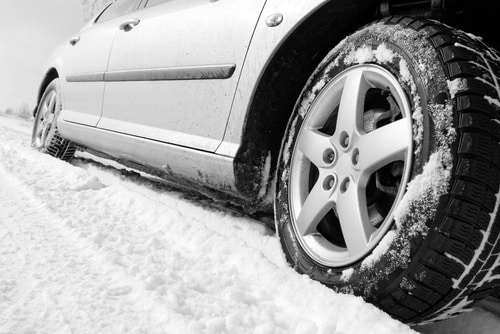
Don’t Ignore Your Vehicle’s Tire Pressure This Winter
Some drivers tend to focus on snow removal and heating their vehicles up during the winter rather than paying attention to the pressure in their tires. Ensuring your tires are at the right cold-weather pressure has been proven to increase tire stability and reduce winter crash risks triggered by tire blowouts and the need for better tread when driving on slush, snow and ice. And even though we see an increase in vehicles equipped with an internal Tire Pressure Monitoring System (TPMS) used to alert you when tire pressure is too low, systems have been known to fail. The auto accidents attorneys at The Lee Steinberg Law Firm would like all Michigan drivers to know how to check and fill tire pressure by following these easy steps. In doing so, you may avoid being involved in a tragic motor vehicle accident.
3 Easy Steps To Check and Fill Your Tire Pressure
Tires heat up as they drive and usually take about a half hour to cool down. The best time to check the pressure is when tires are cold, so be sure to check before your first drive of the day. If needed, you can buy a tire gauge from your local hardware or auto supply store. Digital gauges can range from $5 – $25 while manual gauges are closer to $0.99 and do the same thing. When you are ready, follow these three easy steps.
- Look for your vehicle’s suggested tire pressure. It is often found on a sticker in the driver’s side doorjamb or in the owner’s manual. Take note for different pressure levels for the back and front tires and for different seasons.
- With the car turned off and in park, look for the tire’s valve cap. As you unscrew it, be sure to place the cap in a spot where you won’t lose it and can locate it quickly. Your pocket would make a good place for safe-keeping vs. on the ground, lost in the snow and slush.
- Lastly, press the tire gauge onto the open valve stem until the gauge stops moving or gets a digital reading. Once you have the pressure, check to see if it reflects the amount needed. If the pressure is below, fill the tires with air and recheck.
Not only do tires lose about 1 pound per square inch (PSI) every month, they lose additional PSI for every 10-degree drop in temperature. Most passenger vehicle tires run around 35 PSI, so it won’t take long for them to rank in an accident risk category if not maintained. Most auto manufacturers suggest adding three to five more PSI for safe driving during winter months.
Winter tires are popular in Michigan and experts say they do stay pliable down to the lowest temperatures and stick well to the pavement in wintry conditions. Even so, you should be monitoring the pressure.
Irresponsible Car Owners Cause Accidents
If you or someone you love was injured in a vehicle accident caused by a tire blowout or poorly maintained vehicle, you or your family may be entitled to compensation to help with medical bills, lost wages and pain and suffering. Call The Lee Steinberg Law Firm today for a FREE consultation with one of our experienced Michigan auto accident attorneys: 1-800-LEE-FREE.

